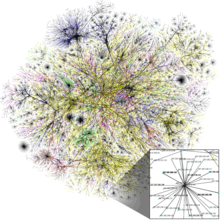Little Pink
Little Pink (xiao fenhong)[1] is a term used to describe jingoistic young Chinese nationalists on the internet.[2]
Overview
The term Little Pink originated on the website Jinjiang Literature City when a group of users strongly criticized any post which contained negative information or thoughts about China. Within Jinjiang Literature City this clique became known as the Jinjiang Girl Group Concerned for the Country or Little Pink after the color of the home page.[3]
The Little Pink are differentiated from members of the 50 Cent Party by not being paid for their online work. In terms of demographics 83% of the Little Pink are female with most being between 18 and 24 years old. More than half of the Little Pink are from third and fourth tier cities in China.[3]
They are primarily active on social media sites banned in China like Twitter and Instagram.[4] Many of the Little Pink are Chinese students studying abroad in countries which don't block access to these social media sites. They have been compared to the Red Guard of the cultural revolution.[5]
Responses
The People's Daily and the Global Times have both lavished praise on the Little Pink as has the Communist Youth League of China.[3]
See also
References
- Xuanlin, Jing. "Online nationalism in China and the "Little Pink" generation". saisobserver.org. SAIS. Retrieved 27 July 2020.
- "The East is pink". www.economist.com. The Economist. Retrieved 27 July 2020.
- Pinghui, Zhuang. "The rise of the Little Pink: China's angry young digital warriors". www.scmp.com. SCMP. Retrieved 27 July 2020.
- Ruan, Lotus. "The New Face of Chinese Nationalism". foreignpolicy.com. Foreign Policy. Retrieved 27 July 2020.
- Meisenholder, Jana. "China's 'Little Pink' Army Is Gearing Up to Invade the Internet". international.thenewslens.com. The News Lens. Retrieved 27 July 2020.
